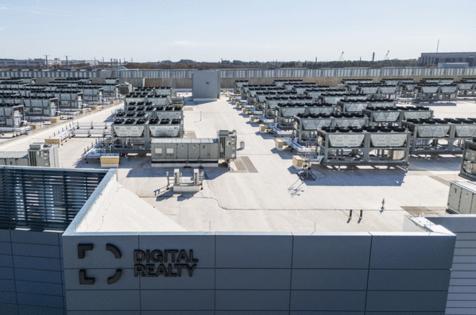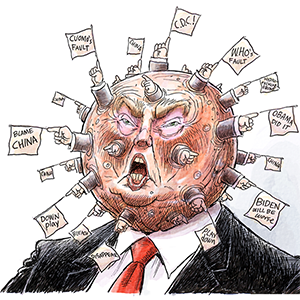Virginia data center tax incentives nearly doubled last year, meaning the state lost out on $1B
Published in News & Features
Since 2010, data centers in Virginia have not had to pay the state’s sales and use tax. At a rate of 4.3%, that foregone revenue adds up: Over the past decade, data centers have been exempt from paying $2.7 billion.
The state lost out on $1 billion through the data center exemption in fiscal 2024, up from $685 million in fiscal 2023.
That’s according to the Joint Legislative Audit and Review Commission, which compiles an annual report on state spending for economic incentive programs. Those economic incentives are designed to encourage businesses to locate or expand operations in Virginia and include measures such as grants, tax credits and exemptions, business loans and gap financing.
The data center exemption constitutes most of the economic incentive value in the state, outstripping the most expensive custom grant programs, like the $750 million grant award that went to Amazon to locate its East Coast headquarters in Virginia. In fiscal 2024, the data center tax exemption accounted for nearly 80% of all economic incentive spending. In the past 10 years, the exemption has covered more than half of all economic incentive spending — and that’s an underestimation since the mechanism to accurately report on the exemption was only implemented in fiscal 2021.
“(The data center exemption) has been going up considerably because there’s been a construction boom, long-standing in Virginia, but now, nationwide since about 2022, it’s become almost hyperbolic,” said Terry Rephann, a regional economist with the Weldon Cooper Center at the University of Virginia. The Weldon Cooper Center partnered with JLARC to produce the most recent economic incentives report.
“So the tax revenue impact has been really increasing rapidly as well in Virginia.”
Virginia isn’t the fastest-growing market for data centers any longer, Rephann said, as data center growth expands to other metro areas and is increasingly constrained by energy availability in places like Northern Virginia. But the tax revenue impact will likely grow over the next decade, Rephann said, in part because the current tax exemption does not sunset until 2035.
“It won’t go down because the (data centers) that are already eligible continue to be eligible, and the new projects that come online that were eligible will be added to that inventory,” he said. “Some incentives that we track, like grant programs, they go up and down depending on the economy and recruitment activity. This just goes up, up and away.”
Proponents of data center development argue the loss of the sales and use tax revenue is offset by the economic benefit to the commonwealth. An agency response letter from the Virginia Economic Development Partnership to this year’s JLARC report noted the report did not cover the economic benefits of data centers and pointed to a JLARC study from last year that analyzed the impacts of the data center industry on Virginia.
“Notably, the analysis estimated that the data center industry supports an impressive 74,000 jobs, $5.5 billion in labor income, and $9.1 billion in Virginia GDP overall to the state economy annually,” wrote Jason El Koubi, president and CEO of the VEDP. “The report correctly notes that incentive spending on data centers is rising in proportion to capital investment. Virginia – and the nation – are experiencing the highest levels of infrastructure-related capital expenditure, as a share of GDP, since the railroad boom of the 1880s.
“These investments are driving critical economic activity and generating substantial tax revenues across the Commonwealth at a time when federal workforce reductions and spending cuts are exerting temporary pressure on Virginia’s economy.”
Dan Diorio, vice president of state policy at the Data Center Coalition, also reiterated the economic benefits of data centers.
“This program has been a powerful, cost-effective way to attract billions of dollars of investment that would not otherwise have occurred,” he said in a statement. “An extension of Virginia’s program will be necessary to stay competitive with other states, most of whom have similar programs, as they are vying for digital infrastructure investment.”
A spokesperson from VEDP also said data centers create jobs indirectly in other industries, such as utilities, professional services and equipment supply chains. They noted that JLARC found that Virginia’s regulatory framework ensures data centers pay the full cost of power-related infrastructure, minimizing impacts on ratepayers. However, the report also found that “growing energy demand is likely to increase other customers’ costs.”
The 2024 JLARC data center analysis also says that “data center companies report the exemption is an important factor when deciding where to locate and expand, and most of the other states that Virginia competes with for new data center developments have similar exemptions.”
Rephann said data centers offer many jobs when they’re being constructed.
“But that building gets finished, unless they’re building additional data centers on the campus,” he said. “And then what you have is a data center that really doesn’t, per square feet, employ a lot of people. For a 250,000-square-foot data center, it may have 25 direct jobs, and they may have an additional 25 contractual jobs of people that work on the site.”
Now, Rephann said, the discussion around data centers has shifted to focusing on energy use and cost.
“Everybody wanted a data center,” he said. “And now communities are saying no, not if it’s going to raise their power rates, because our local business and industry depends on that, as well as households depend on low-cost energy to be able to live comfortably. That is now the issue even more so than the tax incentive impacts.”
________
©2025 The Virginian-Pilot. Visit at pilotonline.com. Distributed by Tribune Content Agency, LLC.







Comments